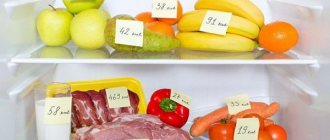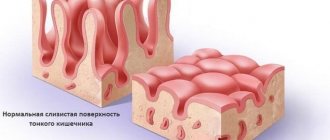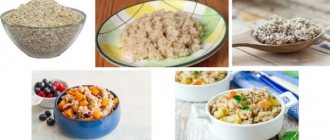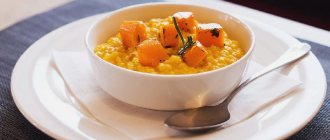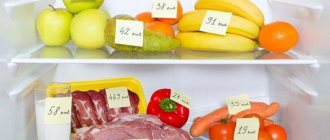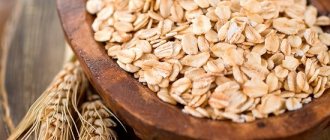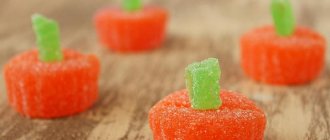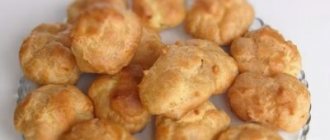Calorie content of cereals
Any cereal contains proteins, amino acids and carbohydrates. All these substances one way or another take part in the construction and production processes of any organism. In addition, it should be noted that any cereal also contains fatty acids, which have positive properties and have a good effect on the body’s metabolism.
However, the main source of calories in porridges made with water or milk is still slow carbohydrates. It is thanks to these substances that cereals saturate the body of any person with energy. In addition, after eating porridge, the feeling of hunger subsides for at least two to three hours.
It is important to note that any cereal contains microelements such as calcium, which is necessary for bone growth, potassium, which strengthens muscles (including the heart), magnesium, which significantly improves the functioning of the central nervous system, as well as iron, which has a positive effect on blood composition, and other important vitamins and minerals.
One of the most popular types of cereal in the modern world is buckwheat. Today, experts distinguish between crumbly and viscous buckwheat. Their caloric content differs, and the caloric content of one is almost 2 times higher than the caloric content of the other.
So, are you interested in types of healthy cereals? Then be sure to pay attention to buckwheat porridge! The calorie content of buckwheat is approximately 163 kilocalories per 100 g of finished product. At the same time, viscous buckwheat has a lower calorie content - only 90 calories per 100 g.
At the same time, it is definitely worth noting milk, which is approximately 118 calories per 100 g. As you can see, cereals are really tasty and at the same time low-calorie foods that can be eaten by both adults and children. Buckwheat with milk is an excellent porridge for children, which will definitely charge your child with a lot of energy before school or kindergarten.
This type of cereal is one of the least caloric. 100 grams of oatmeal contains only 73 kilocalories. The calorie content of oatmeal is indeed very low, so along with this versatile product, you can eat a variety of higher-calorie foods. Oatmeal goes well with fruit!
Of course, with a banana or some other ingredient it will be slightly higher, but the taste of this masterpiece of modern cooking will also be at its best.
Benefits and composition of buckwheat
The chemical composition of the kernel is varied. It contains:
- beta-carotene;
- B vitamins (B1, B2, B5, B6, B9);
- vitamin E;
- vitamin PP,
- vitamin N.
Of the minerals necessary for normal functioning of the body, buckwheat contains:
- potassium;
- copper;
- magnesium and manganese;
- iodine;
- iron;
- zinc and selenium;
- fluorine and nickel;
- zinc and chlorine.
In addition to vitamins and minerals, cereals are rich in easily digestible protein of plant origin, which promotes hematopoiesis and increases the level of hemoglobin in the blood. Buckwheat porridge is recommended for use in case of kidney and liver diseases, a tendency to edema, diabetes mellitus, obesity, hypertension, atherosclerosis, etc. Regular consumption of buckwheat dishes increases the body's resistance to infectious diseases and reduces cholesterol levels. Buckwheat is allowed for diseases of the gastrointestinal tract and cardiovascular system.
Calorie content of buckwheat per 100 g
How many calories are in buckwheat depends on the type of grain and the method of heat treatment, as well as additional products used to prepare the dish. Dry buckwheat has a caloric content of 306 kcal per 100 g, so buckwheat is more caloric than rice (340 kcal), and it is also less caloric than corn grits (325 kcal), bulgur (342 kcal), spelt (336 kcal) or quinoa (368 kcal).
The calorie content of food buckwheat is usually lower (about 290 kcal), buckwheat has about 306 kcal, green groats - 308 kcal, and kernels - 313 kcal.
Rice porrige
Rice is a luxurious product that today we are accustomed to seeing as the main ingredient for sushi and rolls. By the way, these Japanese dishes are also low in calories, so pay attention to them. The calorie content of rice porridge depends on the type of rice!
100 g of viscous rice porridge contains only 97 kilocalories. At the same time, fluffy rice contains 113 kilocalories per 100 g of finished product. As you can see, the calorie content of rice porridge is also quite low, so no one forbids you to combine this healthy cereal with other tasty dishes, such as meat. However, do not forget that the meat must be cooked correctly!
Millet porridge
Millet porridge or millet is also a fairly popular dish in Russia and other countries of the world. The calorie content of crumbly millet porridge is only 135 kilocalories per 100 g of finished product. Yes, this figure is higher than that of buckwheat, semolina, which reach 80 kilocalories per 100 g, and others, but it cannot be said that millet porridge is harmful.
In addition, it is important to note that the calorie content of millet porridge with milk is slightly lower. In this case, it is only 121 kilocalories per 100 g of finished dish.
By the way, you can also combine this dish with useful additional ingredients. Here you can add nuts, dried apricots, dried fruits, berries, jam and other healthy and at the same time tasty ingredients.
Thus, the calorie content of millet porridge with milk is lower than the calorie content of the same dish, but cooked with water. Interesting, isn't it?
What is the calorie content of porridge with water?
All grains are brown and rich in vitamins, microelements and, importantly, there are a lot of so-called high carbohydrates. The stench, after being absorbed into the body, is completely infused with its energy, in which it is absorbed by the surface and not stored as fat. This is why you should replace your porridge with a popular product.
| Porridge (boiled in water) | Calorie content (kcal) | Protein (gram) | Zhiri (gram) | Carbohydrates (gram) |
| Hercules porridge (from all-day plastics) | 105 | 2.4 | 4 | 14.8 |
| Porridge peas | 130 | 10.5 | 0.8 | 20.4 |
| Greek porridge | 101 | 3 | 3.4 | 14.6 |
| Porridge with watermelon | 87 | 2.1 | 1.7 | 15.7 |
| Manna porridge | 100 | 2.2 | 2.9 | 16.4 |
| Vysyan porridge | 109 | 2.6 | 4.1 | 15.5 |
| Pearl porridge | 135 | 2.9 | 3.5 | 22.9 |
| Wheat porridge | 153 | 4.4 | 3.6 | 25.7 |
| Pshonyan porridge | 109 | 2.8 | 3.4 | 16.8 |
| Rice porridge | 144 | 2.4 | 3.5 | 25.8 |
| Barley porridge | 96 | 2.1 | 2.9 | 15.3 |
Buckwheat porridge - calorie content and features
One of the highest-quality foods is buckwheat porridge. The small quantity of this product is extremely popular, so it is actively used by those who want to lose weight. In addition, porridges contain a high amount of vitamins, minerals, amino acids and microelements, as well as silicon. There is also about 6 grams of protein per 100 grams of product, which makes buckwheat so important for those who engage in active sports.
The calorie content of buckwheat porridge with water is 160 kcal per 100 grams.
Oat porridge - calorie content and features
Oatmeal porridge or oatmeal is very easy to prepare, which is why it is so popular as a snack. It’s enough just to fill it with water and put it in a micro-cotton oven for a couple of quills, or fill it with dill and leave it like that. Vikorist may use any additives:
- sweet chocolate;
- dried fruits;
- fresh fruits;
- berries;
- vegetables;
- meat.
For 100 grams of porridge there are about 2 grams of protein and 12 grams of carbohydrates, a lot of vitamins, and some manganese.
The calorie content of oatmeal porridge with water is 70 kcal per 100 grams.
Barley porridge - calorie content and features
It is important for anyone to know that pearl barley porridge is not an ordinary and everyday dish. Most often we eat it on the holy (kutya), but this cereal is very brown and tasty. There are no group B vitamins, potassium, phosphorus, magnesium, zinc and other elements. Per 100 grams more there are 2 grams of protein and 28 grams of carbohydrates.
The calorie content of pearl barley porridge with water is 123 kcal per 100 grams.
Wheat porridge - calorie content and features
Wheat porridge does not have a very good reputation, because it is even brown, and even though many people crushed it in the kindergarten and school, then the bad fortunes loom large. Actually, wheat porridge can be incredibly tasty.
There are 3 grams of protein, 0.7 fat and 17 carbohydrates.
The calorie content of wheat porridge in water is 90 kcal per 100 grams.
Kukurudzyana porridge - calorie content and features
There are very few calories here, but there are a lot of other healthy ingredients:
- Vitamins.
- Zalizo.
- Silicon.
- Rich in cellulose.
Kukurudzyana porridge is excellent for those who are concerned about their health. Get rid of bad speech from your body.
The calorie content of corn porridge with water is 83 kcal per 100 grams.
Manna porridge - calorie content and features
Regardless of those who in childhood told everyone about the great bark of semolina, this porridge burned out as one of the least brown ones. There is a lot of unnecessary starch here that does not bring water to the body. There is one more thing you need to know about semolina porridge - it is already loaded with phytin, which prevents vitamins and elements from being absorbed into the intestines. It is also difficult for calcium to enter the body.
Other types of cereals
Today we are discussing the calorie content of porridges made with water and milk, so now we need to pay special attention to semolina porridge. Semolina porridge is a tasty product that not all children in kindergarten and primary school like. 100 g of this product contains only 80 calories. This is a very healthy and tasty porridge that has a positive effect on the human body at any age. Try it!
Many people are probably interested in the calorie content of Hercules oatmeal! Today we will give an informative answer to this question! “Hercules” oatmeal can be prepared with either water or milk, however, as you understand, the calorie content of this dish will also differ. For example, if you cook oatmeal in water, its calorie content will be approximately 85 calories per 100 g. At the same time, the same oatmeal cooked in milk has a calorie content of 105 calories per 100 g of the finished product.
Particular attention should also be given to barley porridge. This dish cannot be called popular, but there are still lovers who include barley porridge in their nutritious diet. The calorie content of this dish is 181 calories per 100 g of finished product.
Calorie content of different types of cereals in dry form: table
Today, there are a huge number of different types of cereals on store shelves.
Determining the energy component of a product is not difficult. To do this, you do not need to constantly have a bunch of tables or diagrams on hand. All information about the composition of the product can be obtained by carefully studying the packaging. Products sold by weight in supermarkets must have a detailed description.
The most commonly consumed cereals in our region include buckwheat, rice, pearl barley, peas and, of course, oatmeal. White rice is considered the highest calorie among raw ingredients, and oats are considered the most dietary. The calorie content of cereals in the table is indicated in descending order.
Table No. 1 Raw products (based on 100 g)
| Name | kcal |
| Round white rice | 351 |
| Golden rice | 348 |
| Millet | 347 |
| Manna | 337 |
| Brown rice | 336 |
| Corn | 335 |
| Pearl barley | 323 |
| Barley | 321 |
| Barley | 320 |
| Wheat | 315 |
| Buckwheat core | 311 |
| Buckwheat done | 304 |
| Oatmeal | 303 |
Porridge and weight loss
I wonder if you can lose weight by eating cereal? No one argues that the calorie content of porridge is far from the lowest, but it is definitely worth noting that any porridge contains fiber, which cleanses the body. In addition, each porridge contains complex carbohydrates, which the body digests over a long period of time, so they release energy to you gradually. At the same time, beneficial microelements and vitamins contained in cereals improve the functioning of every human organ, while strengthening health.
Thus, if you want to lose weight, add as many cereals as possible to your diet. However, do not forget that when losing weight, you need to eat food at least five times in small portions throughout the day. Bon appetit and good mood!
Before calculating the calorie content of porridge, cook the required amount. To do this, weigh the amount of cereal that you are going to cook and fill it with water or milk. Remember that the calorie content of the porridge will depend on what you cook it with.
After receiving the finished porridge, it also needs to be weighed. You need to find out how much all the porridge you cooked from pre-weighed cereal weighs. The cereal, turning into porridge, increases several times. For example, rice increases almost three times, and semolina almost 10 times. Therefore, you need to set aside the amount of porridge that you are now going to eat and weigh it as well.
After you have weighed the finished porridge, proceed to the calculations. Before calculating the calorie content of porridge, read the packet of cereal to see how many calories it contains. Calories are indicated per 100 grams.
Multiply the amount of cereal that you poured out when cooking the porridge by the number of calories indicated on the pack. You got how many calories are in the dry product. If you cooked porridge in water, then all the porridge that you cooked contains the same number of calories as you got from the dry product. This means that if you cooked 100 gr. cereal, which contains 300 calories, then the entire cooked porridge contains 300 calories, despite the fact that the finished porridge, for example, weighs 300 grams.
When calculating how many calories are contained in the portion of porridge you set aside, use the formula: calorie content of your portion = calorie content of the finished porridge * amount of dry cereal / amount of finished porridge. So, if you set aside 100 grams for lunch. ready-made porridge, then the calorie content of a serving = 300*100/300=100 calories.
Since calculating the calorie content of porridge using a formula and scales is relatively time-consuming, to facilitate this process, you can determine the calorie content by eye. To do this, you need to set aside a certain portion of the porridge from a common pan, then the calorie content of this portion will be equal to the same part of the calorie content of the cereal used. For example, if you set aside ¼ of all porridge cooked from cereals with a total calorie content of 400 calories, then the calorie content of your serving is ¼ of this amount, that is, 100 calories.
Remember that if you cook porridge with milk, then you must add the calorie content of the milk used to the calorie content of the porridge. The calorie content of milk in porridge is calculated using the same method. If you add sugar or butter to porridge, the caloric content of these products should also be taken into account. Calculating the calorie content of porridge is not difficult, you just need to understand the calculation method. Once you do this once, you can then perform this calculation very quickly.
Oatmeal is very good for health. It is good on children's menus and diet menus. Prepared from flakes (usually) or flour. Boil in water or milk. You can diversify the dish with raisins, dried apricots, fresh fruits, honey, etc. Cereals are valuable for their vegetable proteins and fats. It contains dietary fiber that adsorbs heavy metal salts. The porridge contains vitamins B, E, PP, calcium, phosphorus, magnesium and iron. How many calories are in oatmeal cooked in water? What is the calorie content of popular five-minute porridges?
Is it possible to eat porridge on a diet?
Experts in the field of proper nutrition recommend eating porridge for breakfast. Cereals are quite a filling and nutritious option for a morning meal.
In order for the product to bring maximum benefit, you should adhere to a number of simple rules:
- Choose whole grains, they contain more protein, fiber, and retain essential microelements and vitamins for humans.
- The ideal version of porridge is made with water, without adding other ingredients. Sugar is prohibited. Salt is used to a minimum.
- To add flavor, the food can be flavored with a spoonful of honey, pieces of vegetables, fruits, berries, nuts, and herbs.
- The most effective option is to alternate different types of grain. The body receives varied and healthy nutrition throughout the week.
A special express diet has been developed based on cereals. It is designed for 3-5 days. During this period, you are allowed to eat only porridges prepared using a special method.
- Ø pour 4.5 tablespoons of cereal (buckwheat, oatmeal) into a container;
- Ø pour boiling water over the mixture;
- Ø leave tightly wrapped for 20-30 minutes;
- Ø add a little water, boil for 5 minutes;
- Ø Divide into 3 portions;
- Ø Consume warm during the day.
In addition to cereals, it is allowed to drink fermented milk products and 200 g of unsweetened fruits or vegetables.
However, most nutritionists recommend extremely rarely resorting to all kinds of diets. Getting your figure in order without harming your health is possible only with a balanced diet and physical activity.
Classic oatmeal recipe and its calorie content
Necessary products for oatmeal with water:
- flakes (rolled oats) – 50 grams;
- salt - a pinch;
- water – 1 glass.
- Pour water into a saucepan and place on high heat.
- When it boils, add the flakes. Mix.
- Cook over low heat, stirring occasionally.
- The porridge has thickened a little - add salt. And stir again.
- You can turn off the heat, cover tightly with a lid and let the cereal cook. Or you can leave the stove on and finish cooking the rolled oats.
Energy value of the dish:
This simple water dish will be an ideal breakfast for those losing weight, fasting or eating separate meals.
Porridge minutes
Many oatmeal manufacturers pamper consumers with instant products. I poured it in, let it sit for a minute, and it was done. By the way, many people prefer just such products. The frantic pace of modern life and busy work schedule leave no time for cooking. And some do not know how and do not want to learn how to cook porridge. No-cook oatmeal is made from grains that have been flattened into fine flakes. It is available with and without additives. Just pour boiling water over it for 5 minutes. And if you cook, then for about a minute. Prepared with milk, water or juice. Energy composition analysis:
The calorie content is almost 5 times higher than in regular porridge.
How to cook “five-minute”:
- Bring water or juice to a boil.
- Add flakes at the rate of: 2 parts liquid – 1 part dry product. Mix.
- After a minute, turn off the heat and cover the dish tightly with a lid.
- Simmer for 5 minutes.
Instant oatmeal can also be poured into yoghurts and jelly.
How many calories are eaten
Manufacturers indicate the calorie content of the dry product on the packaging. Different manufacturers have different numbers. And for those who count calories, even 10 units will be significant. Not everyone likes Lenten porridge. Sometimes you want to flavor them with butter, diversify them with raisins, dried fruits or a spoonful of honey. How to count calories in a finished dish? To make mathematical operations easier, let’s cook standard rolled oats in water.
- The packaging of oatmeal says that 100 g contains 305 kcal. Water – 0 kcal.
- If we prepare 100 g of rolled oats, then the porridge will also contain 305 kcal.
- To find out how many calories are eaten, you need to divide the total amount by the portion of the dish consumed.
Let's assume that 100 g of dry cereal produces 400 g of porridge. We ate 150 g. We make up the proportion: 400 g - 305 kcal (the number of calories during cooking does not increase or decrease); 150 g – x kcal. In one serving that we ate: (150*305)/400 = 114 kcal. The calorie content of porridge with butter, raisins, apples, bananas, etc. is calculated using the same principle.
- Find the calorie content of the products used. We determine their total calorie content (sum up).
- We calculate the energy value of the finished dish (based on output weight).
- Using the proportion, we find the number of calories in 1 serving.
Let's show it with an example. Ingredients for oatmeal with butter (in parentheses - calorie content per 100 g is multiplied by the amount taken for cooking):
- Hercules - 1 glass, 90 g (305 kcal * 0.9 = 274.5 kcal).
- Water – 3 glasses, 600 g (0 kcal).
- Butter – 25 g (748 kcal * 0.25 = 187 kcal).
The total calorie content for oatmeal with butter is 461.5. Weight of the finished dish - 400 g. 400 g - 461.5 kcal 150 g - x kcal With one serving we get (150 * 461.5) / 400 = 173 calories.
